Oil Palm
Oil palm (Elaeis guineensis) is an important tropical oilseed crop known for its high oil yield per hectare, producing both palm oil (from the mesocarp) and palm kernel oil (from the seed). In recent years, India has been promoting oil palm cultivation to reduce dependence on edible oil imports and boost farmer incomes. Given its economic and nutritional value, oil palm is emerging as a key crop in suitable regions across the country.
Oil palm is the highest edible oil yielding plant, with a per hectare yield of 4 to 5 tons of crude palm oil as against a yield of 0.6 to 1 ton per hectare for Indian traditional oil crops such as Ground Nut, Gingelly, Sunflower, Cocoa Nut, Castor etc.
Government started encouraging Palm Oil crop in India during 1980s with the objective of attaining self-sustenance in edible oil production and reduce foreign exchange spending for import of edible oil in huge quantities.
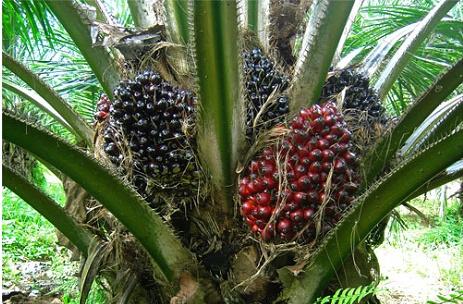
In view of the growing domestic demand for edible oils, the National Mission for Edible Oils – Oil Palm (NMEO-OP) has been approved with a total outlay of Rs 11,040 crore. This will bring an additional area of 6.5 lakh hectare under Oil Palm plantation with 3.28 lakh hectare in the north-eastern states and 3.22 in the rest of India in the next 5 years. The major focus of the Mission is to provide Viability Prices of fresh fruit bunches (FFBs) to the farmers linked with assured procurement by industry with a simpler price fixing formula. The Central Government will compensate farmers through a viability gap payment if price paid by industry is below the viability price upto October, 2037.
Climatic Requirements
Oil palm thrives in tropical climates with an ideal temperature ranging from 24°C to 28°C. At least 5–7 hours of bright sunlight daily is essential for optimal oil production. Oil palm requires an annual rainfall of 2,000-2,500 mm, well-distributed throughout the year.
Soils
Deep, well-drained loamy soils are suitable for cultivation of oil palm. Slightly acidic to neutral soils, having pH range of 4 to 6, and soils rich in organic content support better root development and yield. Waterlogging should be avoided, though the crop requires high moisture.
Sowing Time & Methods
Oil palm is a perennial crop and planted year-round in areas with sufficient irrigation. The period from June to December, ideally coinciding with the monsoon season, is the best time for rainfed plantations.
Nursery raising is recommended where seedlings are grown in two stages viz. pre-nursery (3 months) and main nursery (9–12 months), followed by transplantation of well-grown seedlings. Planting is typically carried out using the triangular system with a spacing of 9 m × 9 m × 9 m, which allows for the accommodation of approximately 140 palms per hectare.
Growing States
Andhra Pradesh is the major Oil Palm growing State in India followed by other States such as Telangana, Karnataka, Tamil Nadu, Odisha, Assam, Mizoram, Arunachal Pradesh, Bihar, Madhya Pradesh etc.
Varieties
Most oil palms grown in India are hybrids derived from Tenera, which is a hybrid between Dura (thick shell) and Pisifera (shell-less). Tenera produces high-quality oil and is the preferred variety for commercial cultivation.
Improved varieties and hybrids are introduced through ICAR and state agricultural universities to suit local conditions.
Water Management
Oil palm requires substantial and regular water due to its high transpiration rate. Drip irrigation is most efficient, especially in water-scarce regions. Regular irrigation is crucial during dry periods to ensure consistent yields. Yielding palm of 3 years and above require a minimum of 150 litres of water daily. Frequent watering during the initial 3 years after planting and during flowering and fruit development is vital.
Weed Control
Regular hand weeding or mechanical removal around the base of palms, especially during early growth stages, is recommended. Organic mulches like coconut husk or dry leaves help conserve moisture and suppress weeds. Growing leguminous cover crops like Mucuna or Calopogonium can naturally suppress weeds while enhancing soil fertility. Herbicides like glyphosate can be used cautiously, ensuring they do not damage young palms.
Glimpses of our Social Media Posts
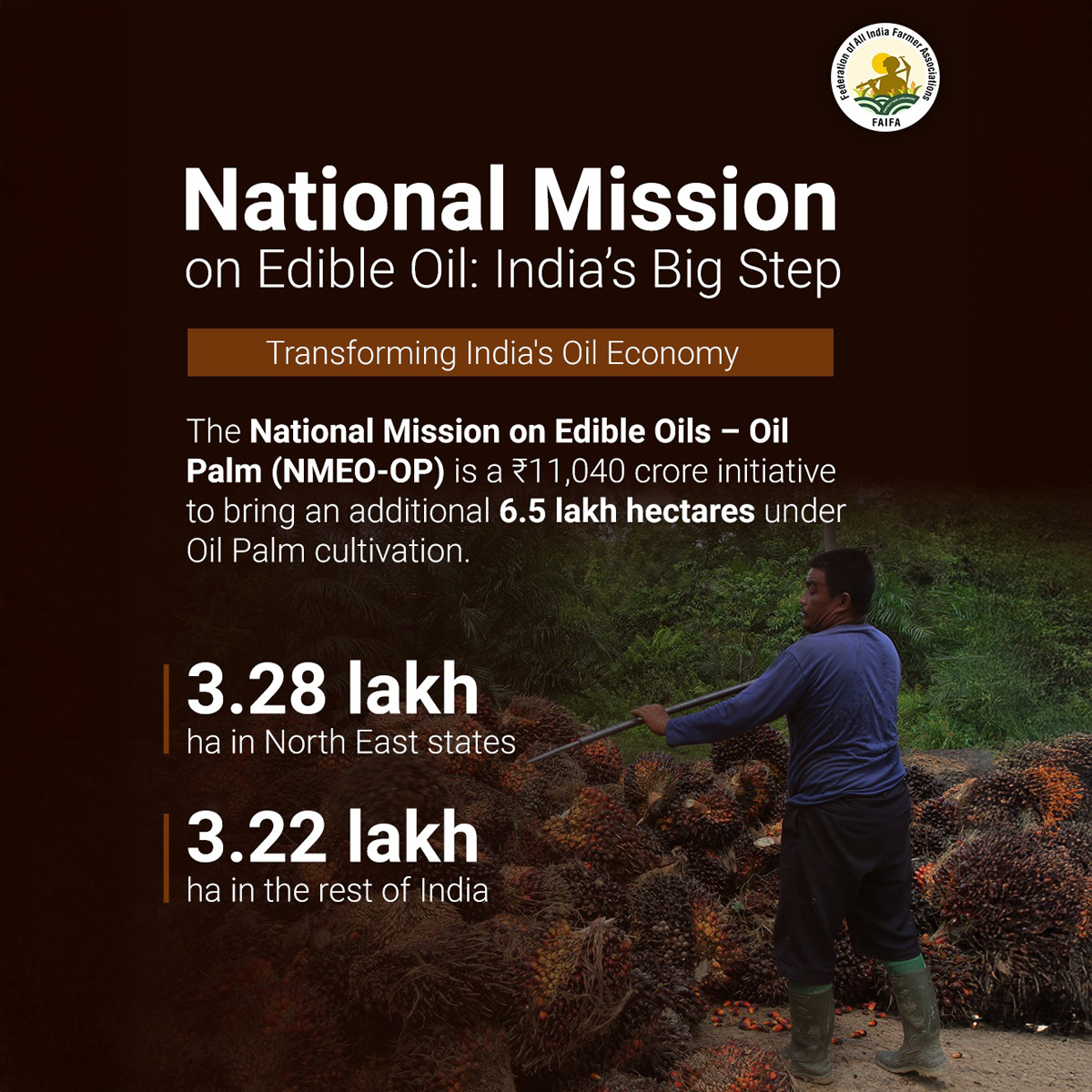
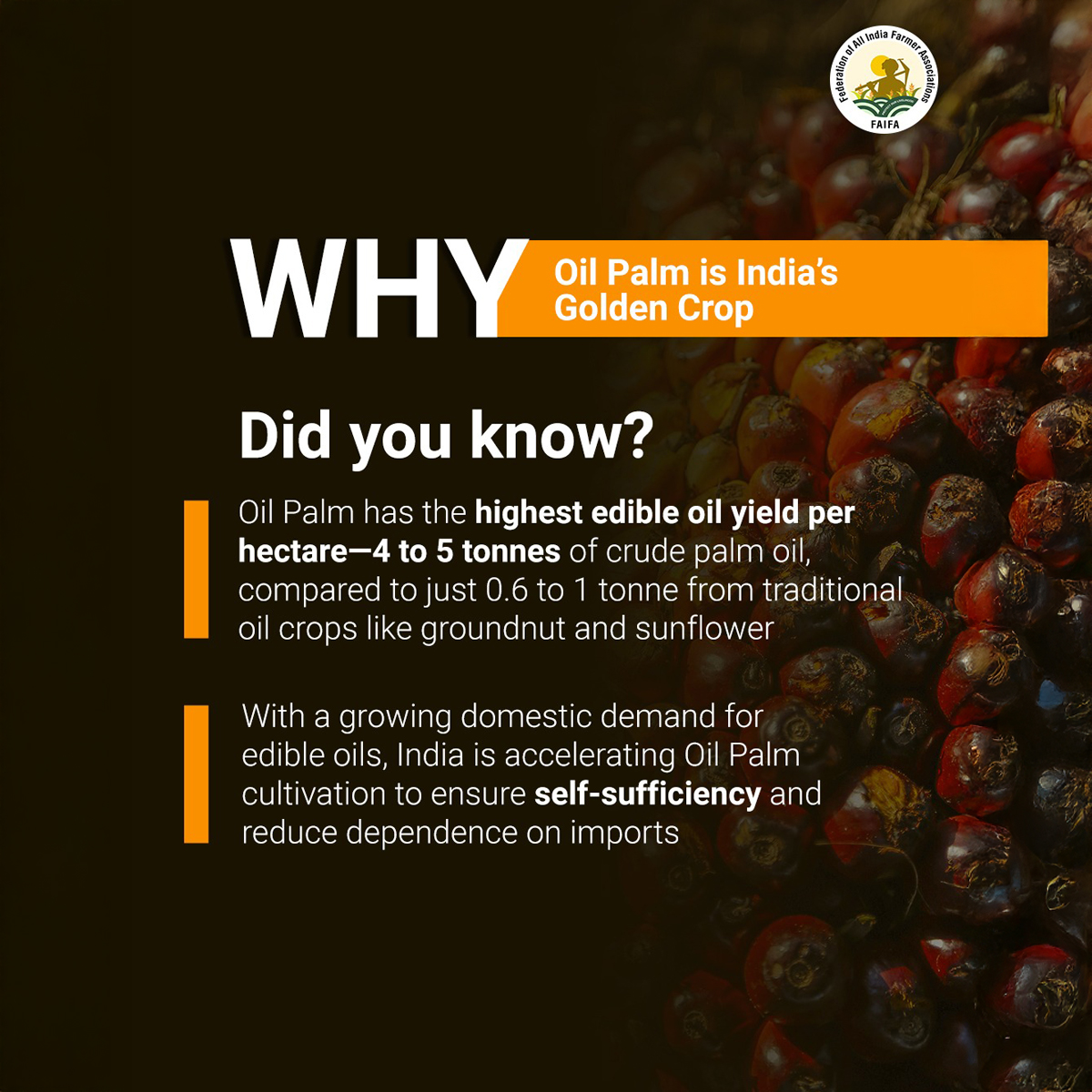
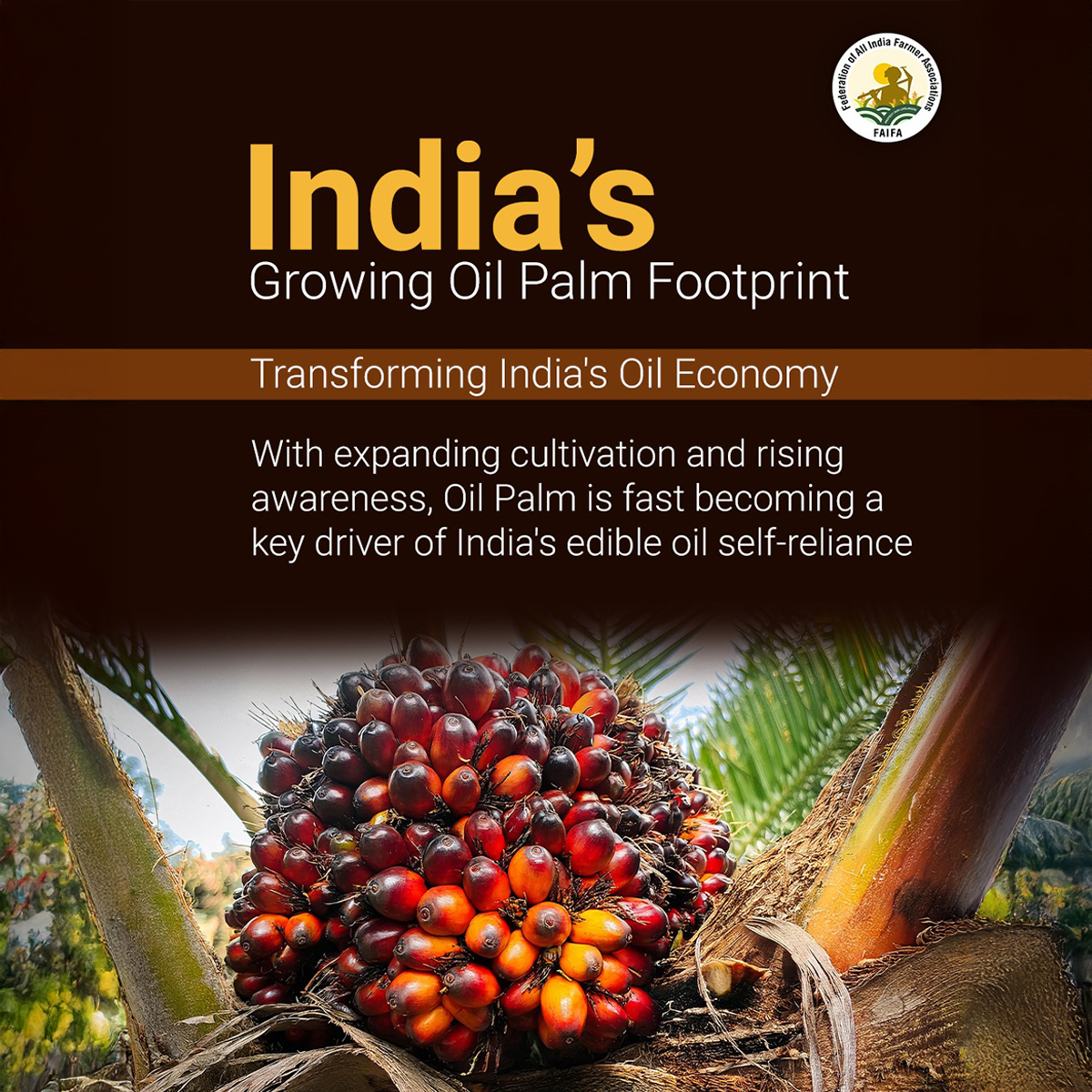
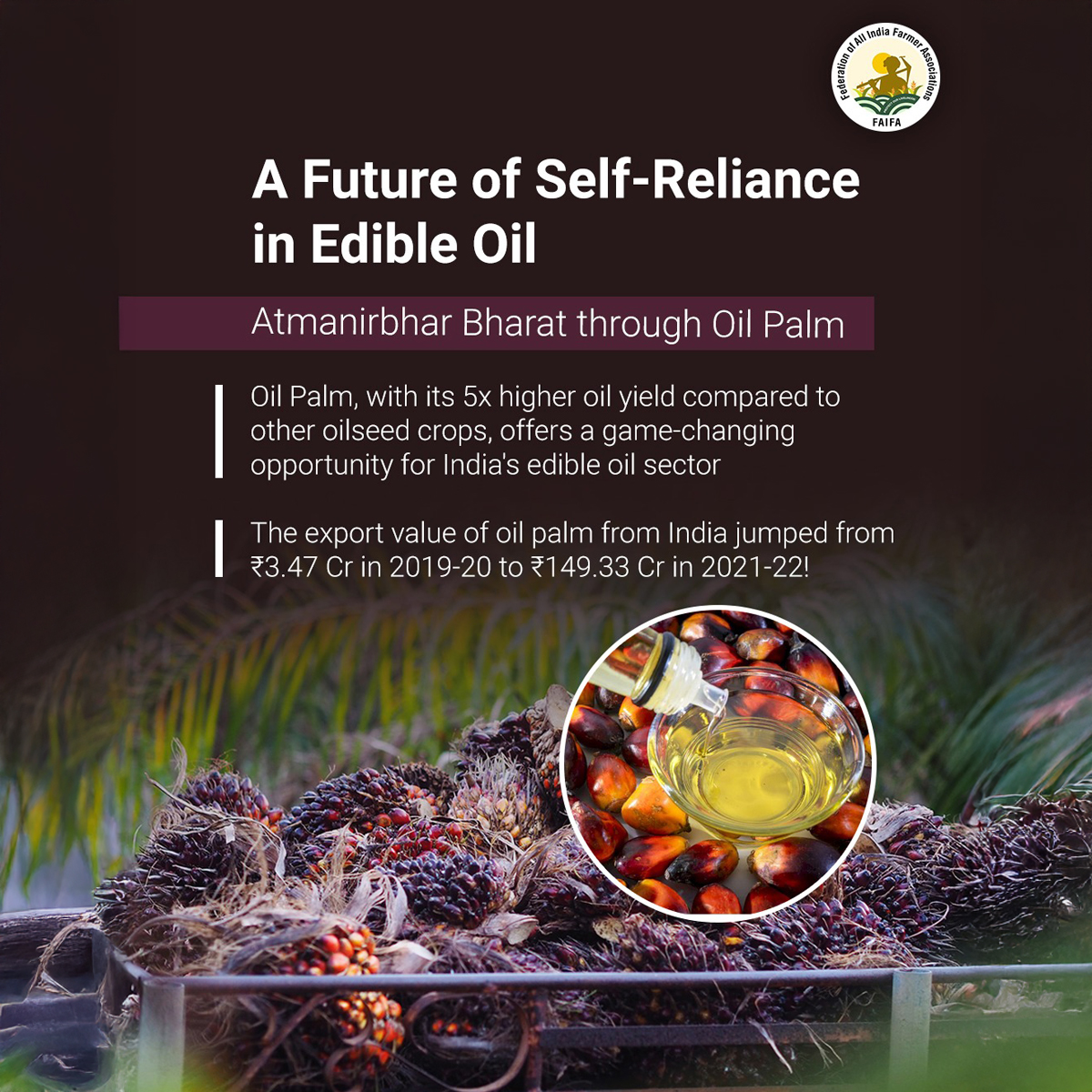




<h5 class=”mb-0″ style=”text-align: center; padding: 0.05px; </h5>
Palm Oil Production in India
|
|
2019-20 |
2020-21 | 2021-22 |
2022-23 |
2023-24 |
|
Production |
2.77 | 2.77 | 3.58 | 3.90 | 3.90 |
Source: Agricultural Statistics at a Glance 2023, Ministry of Agriculture & Farmers Association, Govt. of India
Oil Palm Exports from India
|
|
2019-20 |
2020-21 | 2021-22 |
2022-23 |
2023-24 |
|
Value |
3.47 | 8.37 | 149.33 | 29.56 | 39.06 |
Source:Department of Commerce, Ministry of Commerce and Industry, Govt. of India
https://tradestat.commerce.gov.in
India’s role in the global palm oil export market is currently limited due to domestic consumption needs and production constraints. However, with strategic initiatives like NMEO-OP and investments in processing infrastructure, India has the potential to enhance its export capabilities in the future. Balancing domestic demand with export ambitions will be crucial in shaping India’s trajectory in the global palm oil trade.
References:
- https://nmeo.dac.gov.in/li>
- National Food Security Mission (NFSM), Ministry of Agriculture & Farmers’ Welfare, GoI https://www.nfsm.gov.in/
- Tamil Nadu Agricultural University (TNAU) Agritech Portal https://agritech.tnau.ac.in/index.html
